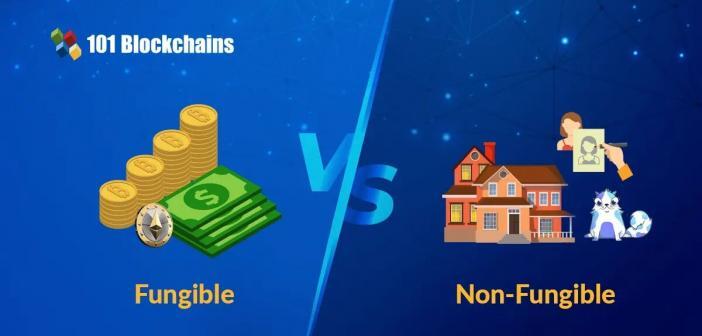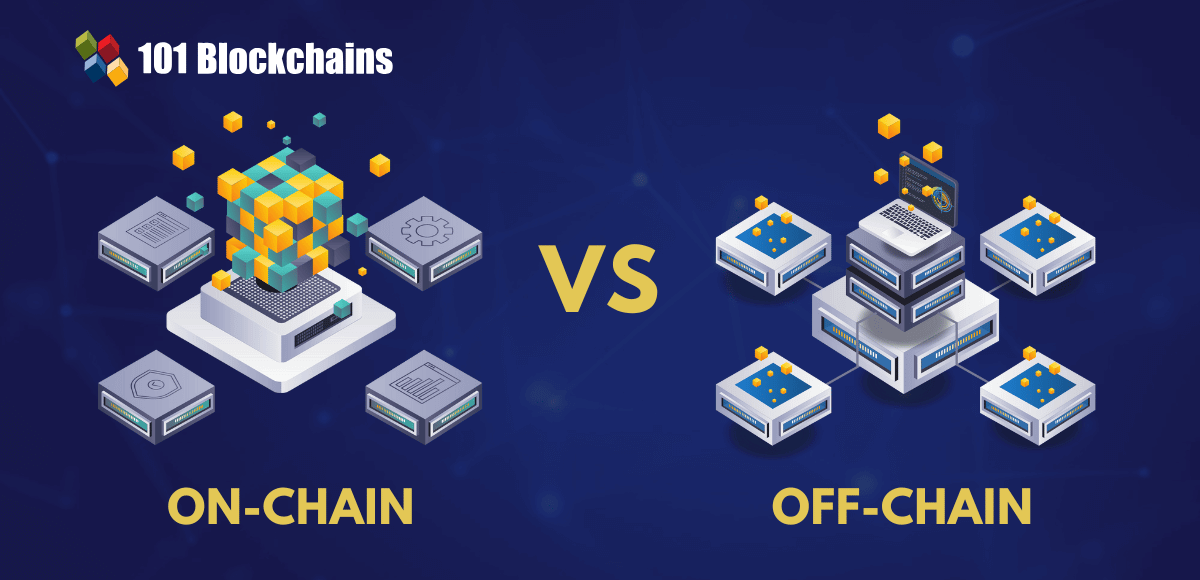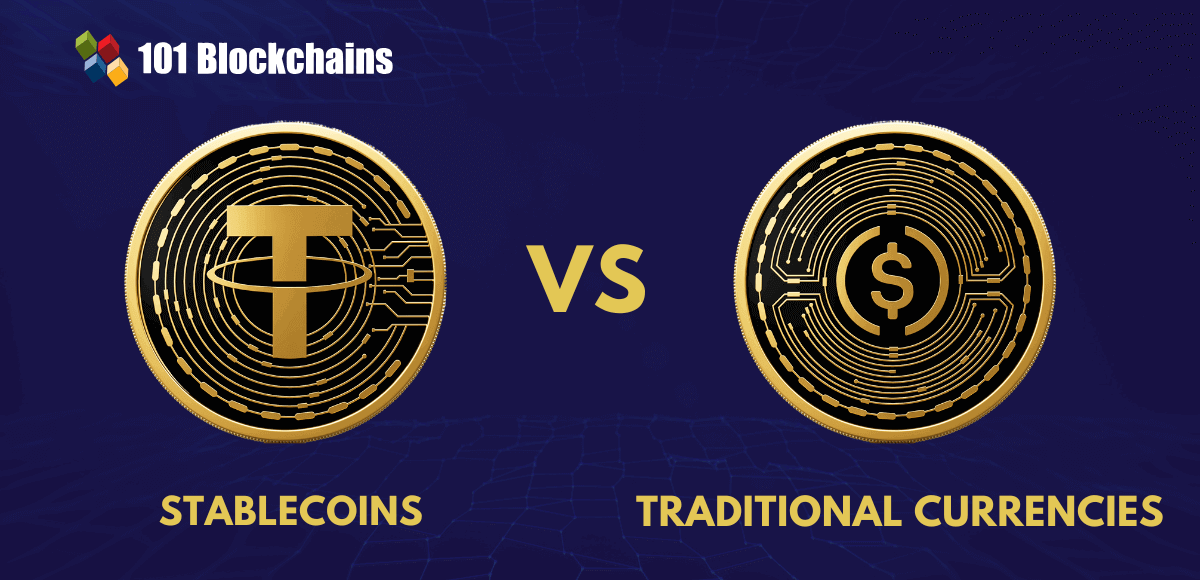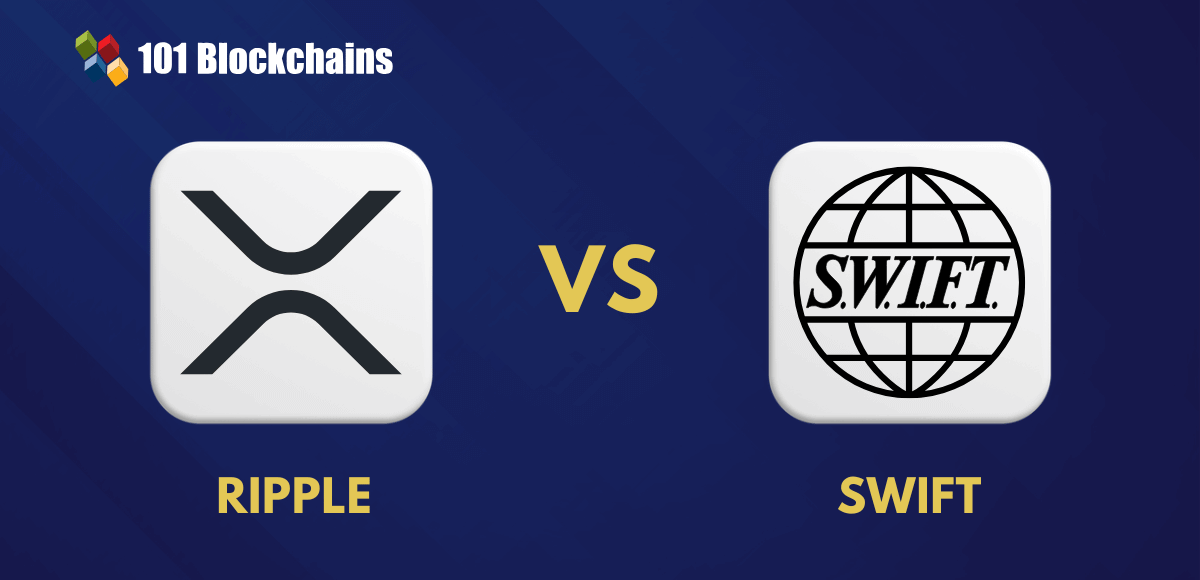Learn how blockchain truly works, master key definitions, and uncover what makes smart contracts so "smart." Dive into the fundamentals, gain valuable insights, and start your blockchain journey today!

- Comparisons
Gwyneth Iredale
- on March 24, 2021
The Difference between Fungible and Non-Fungible Tokens
Blockchain technology has always been associated with cryptocurrencies. If you are new to the world of blockchain, you are most likely to think that it is only suitable for developing crypto assets. On the other hand, the true potential of blockchain technology extends beyond cryptocurrencies.
Now, governments, enterprises, and people could place IDs, real estate data, and certificates alongside other crucial information regarding real-world assets on blockchain. Students could easily have their diploma issued on blockchain as a digital document, recognized by authorities all over the world. So, what has helped people in achieving such a unique feat?
This is where the debate on fungible vs non-fungible tokens has found prominent recognition in recent times. Non-fungible tokens are touted as the future of blockchain economy. However, they are also frequently pitted against fungible tokens or existing cryptocurrencies. Let us clear our doubts by taking a look at the difference between fungible and non-fungible tokens.
Aspiring to Become a Certified NFT Expert? Enroll in Certified NFT Professional (CNFTP) Course Now!
What Are Tokens?
The foremost aspect that you should reflect on for finding out the differences between fungible and non-fungible tokens is the definition of tokens. In the actual world, tokens refer to a tangible or visible representation of a feeling, fact, or quality. People encounter many types of tokens in real life.
For example, a hotel key card is proof of payment to the hotel for a room. The office ID card shows proof of your employment in a company. Similarly, a driving license shows that an individual has completed the necessary training required for driving in their country. Therefore, a token also represents a particular entity in the crypto space.
The token can hold value, voting rights, stakes, or anything. Interestingly, a token is not restricted only to a particular role and could address various roles in its native ecosystem. A token could represent a certain utility or an asset of a company. The company can give the tokens to investors in a public sale.
Significance of Tokens
So, what is the role of a token? The answer to this question is a significant factor in understanding the fungible vs non-fungible tokens debate clearly. A token is not restricted to a particular role and could address a wide range of functions within their native ecosystem. The functions can include the following,
- Tokens can serve as gateways to blockchain applications, and users need tokens for accessing the decentralized app.
- Tokens could also signify the qualification of individuals for holding specific voting rights. For example, EOS blockchain tokens can allow an individual to vote for block creators.
- Tokens can also act as suitable entities for enriching the user experience of holders. User experience enhancement tokens can help in improving user experience within the boundaries of a specific environment. For example, in the case of Brave web browser, users having BAT or the tokens used in Brave could enjoy the privileges of enriching customer experience by leveraging their tokens for adding advertisements or other attention-based services related to the Brave platform.
- Most important of all, the applications of tokens as currency also serve a crucial role in decoding the difference between fungible and non-fungible tokens. Tokens can act as a store of value for conducting internal and external transactions in a particular ecosystem and offer a different kind of monetary system including digital assets.
- Another critical application of tokens refers to value exchange. As a matter of fact, tokens have been traditionally used for value exchange in the blockchain ecosystem. So, tokens could help in developing an internal economic system in an application.
- It is also important to reflect on the applications of tokens as an indicator of ownership of a unique entity. Tokens can represent ownership of something unique for a particular user, and this application sets the foundation for the fungible vs non-fungible tokens debate.
Want to get an in-depth understanding of non-fungible tokens (NFTs)? Join the Standard & Premium Plans and get free access to NFT Fundamentals Course.
Foundation for Comparing Fungible and Non-Fungible Tokens
There is no doubt that blockchain is the ideal technology for management of digital assets of various types. It has the features of immutability and security that make it ideal for managing digital assets. In the case of fungible tokens, which are the commonly used ones in blockchain till now, it is impossible to write any unique information to the token.
On the other hand, cryptographic tokens which are unique and can hold data instead of value could be ideal preferences. Such types of tokens are referred to as non-fungible tokens that are defined on the Ethereum with ERC standards such as ERC-721 standard. So, it is clearly evident that the difference between fungible and non-fungible tokens arises with the emphasis on storing information. Let us establish the foundation for comparing fungible and non-fungible tokens by reflecting on their definitions.
Any fungible entity, in economic terms, refers to its capability for interchangeability with another asset or good for same value. The most common examples of fungible assets refer to currency and money. For instance, the $5 bill in possession of an individual would hold the same value as a $5 bill of another person. Similarly, two $5 bills of one individual would hold the same value as a single $10 bill of another person.
Gold is also another example of a fungible asset because one ounce of gold in a particular country would have the same value as one ounce of gold in another country. The fungible vs non-fungible tokens debate arises from the fact that fungibility is scripted in the code of Bitcoin as well as other cryptocurrencies. Most important of all, a fungible good is standardized, and the units of fungible goods don’t have any uniqueness.
On the other side of the discussion on difference between fungible and non-fungible tokens, NFTs serves as a unique token variant without any interchangeability with other tokens. NFT features unique traits that clearly imply restrictions for replacing or exchanging it with an identical token.
Non-fungible tokens are different from cryptocurrencies as they don’t have any inherent value. As a matter of fact, the non-fungible tokens derive value from the assets or goods represented by them. NFTs use various token standards and deploy different types of smart contracts. Non-fungible tokens are considered as the new-age tools for developing a virtual economic ecosystem on blockchain.
Build your identity as a certified blockchain expert with 101 Blockchains’ Blockchain Certifications designed to provide enhanced career prospects.
Explicit Differences between Fungible and Non-Fungible Tokens
Now that we have a clear impression of what fungible and non-fungible tokens are, it is reasonable to focus on the fungible vs non-fungible tokens comparison. Let us reflect on the unique traits of fungible and non-fungible tokens that set them apart.
-
Interchangeability
As you must have understood by now, fungible tokens are completely interchangeable with each other. The most notable example of fungible assets refers to fiat currencies. You can transfer fungible assets from one owner to another to make payments for certain things. On the other hand, exchanging fungible assets does not hold any meaning because they hold the same value. Fungible tokens are generally used for making payments and tracking balances.
One of the notable examples of practical blockchain use cases of fungible tokens is the binding of tokens to the account balance of an organization in a particular payment account. As a result, payments could be completed with token transfers. In addition, users can carry out periodical netting and settlement by querying the resultant token balances.
-
Value Transfer
Another significant aspect is the difference between fungible and non-fungible tokens refers to the fact that every account maintains a balance on the basis of tokens owned by the account. It is easy to transfer tokens easily to other Ethereum accounts by leveraging direct transactions or swap techniques. In the case of token transfers, source account is debited with amount of transfer like in the case of bank transfers. At the same time, the beneficiary account receives a credit of the same amount.
The fungible vs non-fungible tokens comparison implies that non-fungible tokens or NFTs have a unique value proposition. NFTs are unique instances, and every token has a unique ID for easily differentiating from other tokens in the same smart contract for the token. The non-fungible token always has a particular owner, and their values could be different because of the separate treatment of each token.
Certain NFTs can represent unique tributes having provable scarcity. Therefore, NFTs are in high demand, featuring more buyers with more worth in comparison to the ones representing common attributes. In addition, NFTs could support transfer of ownership as well as trading. For example, John having tokens representing a production batch of Scottish whiskey, could trade it for tokens representing a batch of Bordeaux wine.
One of the notable use cases refers to assignment of a non-fungible token to a real estate property. Users can transfer NFTs from Ethereum account of the bank to another Ethereum account of the house owner after paying off the mortgage. Thus, it introduces a new form of use case in using blockchain for real estate sector.
Learn about the intersection of blockchain and real estate, Enroll now in Blockchain For Real Estate Masterclass
-
Ethereum Token Standards
The next important factor in deciding the difference between fungible vs non-fungible tokens refers to token standards. If you want to create a healthy ecosystem, you should develop decentralized apps on top of Ethereum having seamless interaction with one another. On the other hand, if you have two different tokens, such as Token Beta and Token Alpha, can you find different smart contract structures in them? Developers have to study both contracts for the interaction between the two tokens.
In addition, developers must map out the exact approaches in which tokens can interact with each other. However, this factor does not work well for scalability. In the case of 100 different tokens having 100 different smart contracts, it will be difficult to narrow down on all conditions and qualifications for ensuring that transfers can go through all tokens.
As a result, you can encounter a massive volume of complex calculations for token transactions. Therefore, token standards evolved as a suitable alternative for defining the difference between fungible and non-fungible tokens. So, the decision for standardizing the rules for governing the underlying architecture of tokens is undoubtedly a benchmark for differentiating fungible and non-fungible tokens.
Want to learn about the ethereum technology? Enroll Now: The Complete Ethereum Technology Course
-
Fungible Tokens Use ERC-20
ERC-20 is the specific set of rules, and ERC refers to ‘Ethereum Request for Comment.’ The foundations of ERC-20 rely on elements such as totalSupply, approve, allowance, balanceOf, transfer, and transferFrom. These elements are the mandatory rules and functions for ERC-20 tokens.
On the other hand, tokens could also have the following three optional characteristics. The characteristics include a symbol, token name, and decimal up to 18. These characteristics define the ERC-20 as a fungible standard. So, the standards dictate that fungible tokens have following properties dictating their position in the fungible vs non-fungible tokens debate.
- Fungible tokens of the same type can replace one token.
- Similar underlying rules serve governance of fungible tokens.
- Fungible tokens are easily divisible, and people can use smaller fractions to pay back a larger amount.
-
Non-Fungible Tokens Use ERC-721
However, the limitations of ERC-20 present notable conflicts, thereby leading to the creation of ERC-721 token standard. The ERC-721 token standard could help in creating non-fungible tokens. Interestingly, the ERC-721 token standard is similar to ERC-20 in terms of functionality from various aspects. The similarity between ERC-20 and ERC-721 exists primarily on the grounds of following reasons,
- Developers could easily make the transition without having to learn an array of new things.
- Users could have a better experience in storing tokens in general wallets alongside trading them on exchanges.
The interface of ERC-721 offers two different methods, such as tranferFrom and ownerOf, which have distinct functions. The ownerOf function aims at querying a token’s owner. The transferFrom function would help in transferring ownership of a token.
Learn more about the basics of NFT (Non-Fungible Token) and the practical implications of non-fungible tokens through NFT Skill Path
Here is a comparison table that showcases how fungible tokens are different from non-fungible tokens.
| Criteria | Fungible Tokens | Non-Fungible Tokens |
|---|---|---|
| Interchangeability | Fungible tokens are easily interchangeable although there is no additional value associated with interchanging fungible tokens. | Non-fungible tokens are not interchangeable as each of them represents unique assets. |
| Value Transfer | Value transfer depends on the number of tokens in the ownership of a person. | The value of the unique asset represented by NFT is helpful in their value transfer. |
| Divisibility | Fungible tokens can be divided into smaller parts and the smaller parts can help in paying off the larger sums. | NFTs are not divisible and have their value as a whole entity. |
| Token standards | Fungible tokens depend on the ERC-20 standard. | Non-fungible tokens leverage the ERC-721 standard. |
Conclusion
On a final note, it is clear that non-fungible tokens and fungible tokens are right on their own terms. The fungible vs non-fungible tokens comparison is a significant aspect that can define the future of blockchain ecosystem. Non-fungible tokens provide a clear advantage over fungible tokens in terms of security and immutability. Users could add extra information and context for the metadata in asset tokenization process.
However, users may have difficulty trusting non-fungible tokens due to their relatively new nature. On the contrary, they have a wider acceptance in the blockchain ecosystem with prominent applications in gaming and art. As the debate between fungible and non-fungible tokens gains momentum, new advancements could definitely make a mark.
*Disclaimer: The article should not be taken as, and is not intended to provide any investment advice. Claims made in this article do not constitute investment advice and should not be taken as such. 101 Blockchains shall not be responsible for any loss sustained by any person who relies on this article. Do your own research!





